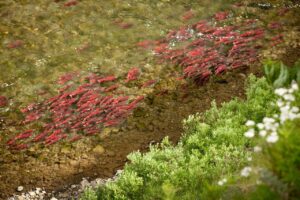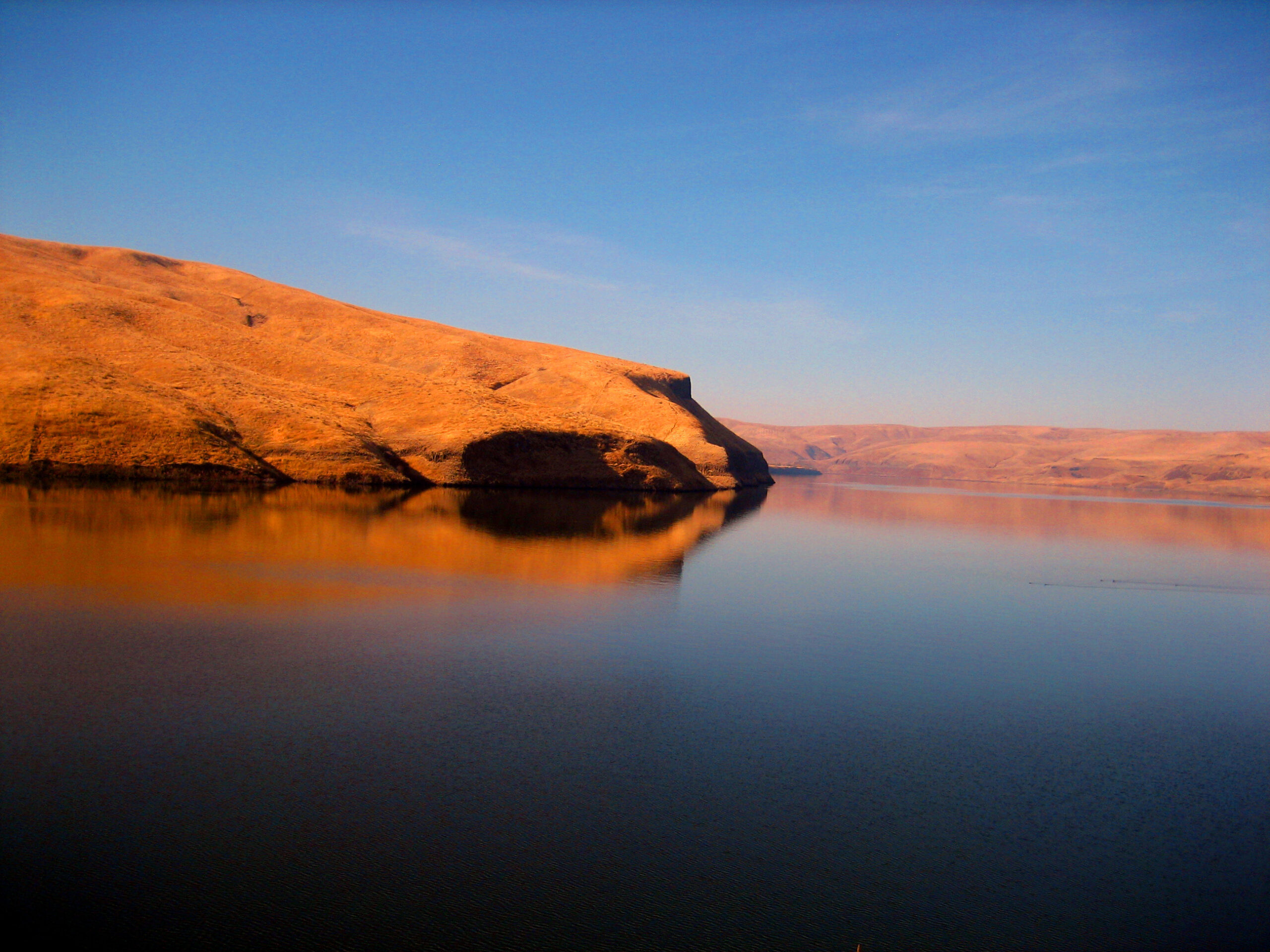In October 2021 Governor Jay Inslee and Senator Patty Murray announced a joint federal-state process to develop and deliver a comprehensive solution to protect and recover Lower Snake River salmon and invest in the region’s communities. This report is a significant step toward leading the largest salmon recovery in history—delivering crucial justice to Native Nations and jobs to communities—by removing four dams on the Lower Snake River and replacing the services they provide. Learn more here about this important issue.
In August of 2022, Sen. Murray and Gov. Inslee released their final Lower Snake River Dam Benefits Replacement Report, recommendations, and public statements (see below) outlining a way forward to protect and recover endangered Snake River salmon and steelhead populations and aid endangered, salmon-dependent Southern Resident orcas.

These long-anticipated recommendations concerning the Snake River include this essential conclusion: “The science is clear that – specific to the Lower Snake River – breach of the dams would provide the greatest benefit to the salmon. Salmon runs in the Lower Snake River are uniquely impacted by the dam structures relative other watersheds, and the waters of the lower Snake River have unique potential for robust aquatic ecosystem and species recovery.”
Most importantly the report addresses how the loss of almon is a historic and ongoing injustice to Northwest Tribes who were promised the right to fish forever. “Breaching the LSRD could increase tribal harvest by 29% annually and would have the highest likelihood of removing salmon from Endangered Species Act listing and maintaining treaty and trust obligations compared to other alternatives. Breaching the LSRD would permanently drain the four lower Snake River reservoirs and could create substantial benefits for affected tribes. It would allow tribal peoples to renew their close religious and spiritual connection with approximately 34,000 acres of land where their ancestors lived and are buried and allow them to properly care for their grave sites. They could return to more than 700 locations where they were accustomed to live, fish, and hunt, harvest plants, roots and berries, conduct cultural and religious ceremonies, and pursue other aspects of their normal traditional lives.” (page 4)
While the senator and governor’s communications were not as direct and detailed as we had hoped, we are now nevertheless on a clear path to replace the services of the dams. Murray and Inslee’s overall package includes essential commitments and next steps for state and federal governments working with tribes and stakeholders to develop and implement a comprehensive regional solution to uphold our promises to tribes, restore this historic river, protect and rebuild abundant salmon populations, and meet the needs of communities.

What Gov. Inslee’s and Sen. Murray’s recommendations say:
- Extinction is not an option.
“Extinction of salmon, orca and other iconic species in the Pacific Northwest is categorically unacceptable…we will not permit Washington state to lose its salmon.” - We are on a path for replacing benefits and breaching the four lower Snake River dams as part of a comprehensive plan for salmon restoration in the Columbia Basin.
That requires building new energy and transportation infrastructure “in an effective efficient manner. We can do so in a manner that is responsible and environmentally safe, that addresses the concerns of communities, and that respects the Treaty rights and cultural imperatives of Tribal sovereigns. But we must do this work.” - Building new energy sources can be done without harming the reliability of our region’s energy or being burdensome to families and businesses.
We can have both abundant salmon and a reliable energy system. Arguing for one or the other is “an oversimplified binary choice, and it is one that we do not accept or see as inevitable.” - Federal agencies need to work urgently to invest in replacing the dams’ energy, irrigation, transportation, and recreation services.
“Political controversy, legal conflict, or inconvenience should not be used as excuses for failing to complete this work.”
What comes next:
We must move quickly and efficiently to make sure they meet their commitments and start making the actual investments now to replace the dam’s services and prepare for breaching. Breaching the Snake River dams by the end of the decade is vital to salmon restoration. This is doable. Waiting means extinction.
We will support Northwest tribes in their efforts for salmon restoration throughout the Columbia Basin, including breaching. That includes getting $1 billion in backlogged restoration and remediation unstuck and underway.
We will support the energy sector to responsibly site and transition to clean generation as new resources are proposed and constructed. We will help states and utilities apply for funds to build new projects that make our energy system stronger and the lower Snake River dams unnecessary.
We will work with the Biden administration as well as with the state legislatures and governors’ offices in Washington and Oregon to support the funding and authorization for a variety of efforts in the conservation, energy, transportation, and agriculture sectors that make replacement and breaching possible. This includes advocating for federal dollars coming to the states from the Infrastructure Investment and Jobs Act and the Inflation Reduction Act.
Our way forward – to plan and implement the replacement of services and restoration of a free-flowing Lower Snake River – will require significant collaborative planning, policy, advocacy, and state and federal investments. With salmon and steelhead populations and the Southern Resident orcas struggling for survival today, immediate and sustained action is essential.
Our partners at Save Our wild Salmon have shared that the crucial role of advocates remains to:
- Continue building momentum and public demand for urgent action
- Deepen and expand political leadership
- Hold our elected officials – regionally and nationally – accountable to their commitments to protect salmon and orca from extinction and restore abundance
Earth Ministry/WAIPL will continue to track this campaign and provide opportunities for people of faith to contribute our unique perspective and presence. Our many faiths call us to steward a free-flowing Lower Snake River in a way that prioritizes the inherent and treaty-protected rights of Native Nations and honors the varying needs of all the region’s residents. This report provides us with the path forward to not just meet our legal obligation or address a biological necessity, but also to fulfill a moral imperative to recover salmon as a spiritual and cultural icon of the Pacific Northwest.
Our deep gratitude goes out to the many faithful advocates who helped foster this unprecedented momentum for a free-flowing lower Snake River. Together, we will continue to bring a moral message that holds our government accountable to upholding promises to Native Nations, investing in holistic solutions, and restoring abundant salmon and orca.
Resources
Final Lower Snake River Dam Benefits Replacement Report
Senator Murray / Governor Inslee recommendations

